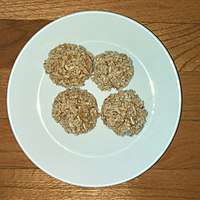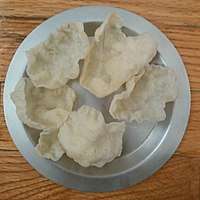Sandige
Sandige (/sʌndɪɡeɪ/) or vadagam is a fried snack, originating from the Indian subcontinent, popular in Karnataka, Andhra Pradesh and Tamil Nadu. It is also served as an accompaniment with meals.
| Alternative names | Vadam |
|---|---|
| Course | Accompaniment, snack |
| Place of origin | India |
| Region or state | South India |
| Serving temperature | Hot or cold |
| Main ingredients | Rice, Sago, Wheat |
Preparation


Sandige is prepared by making a gruel of the main ingredient and spiced with asafoetida, chili paste and salt.[1] The gruel is poured on a plastic sheet or a big piece of cloth and dried under the sun for a couple of days. To make aralu sandige and avalakki sandige, the main ingredients are added to the gruel and made into balls and sun-dried. Peni and avalakki sandige are made using chakli molds and extruders.
The sun-dried sandige is stored to use throughout the year. It is deep-fried in hot oil before serving.
Types
Different kinds of sandige are listed below with its main ingredients
- Sabbakki sandige - pearl sago
- Aralu sandige - popped rice and ash gourd
- Akki peni sandige - rice flour
- Avalakki sandige - pounded rice
- Godi peni sandige - wheat
See also
References
- Sen, Colleen Taylor (2014). Feasts and Fasts: A History of Food in India. Reaktion Books. p. 146. ISBN 1780233914. Retrieved 29 December 2017.